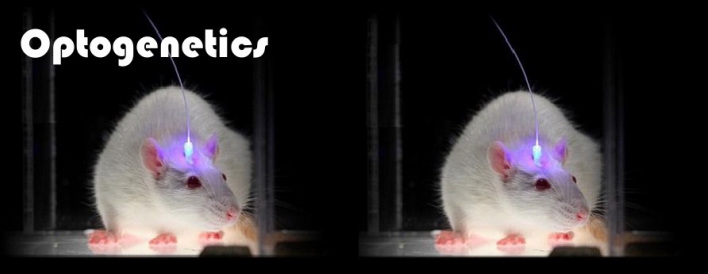
The first “Men in Black” film came out in 1997, eliciting rave reviews from anyone and everyone who had a soft spot for corny sci-fi. The film had it all: alien weaponry, Will Smith cracking wise, giant cockroach monsters, and, of course, the nifty memory-erasing “neuralizer.” The neuralizer was a sleek pen-sized device that fired a blast of bright red light, somehow wiping away the memories of people who had witnessed extraterrestrial events. While it may be a stretch to say that it’s a case of life imitating art, a group of scientists at the University of California Davis recently used a light-based technique called optogenetics to similarly erase memories in mice.
When it comes to technologies that sound like they came out of an Isaak Asimov novel, optogenetics may very well take the cake. It’s a science that was pioneered by Dr. Karl Deisseroth of Stanford, and in 2010 it was awarded the prestigious title of “method of the year” by the journal “Nature Methods.” Optogenetics – as described in its 2010 “Nature Methods” feature – uses genetic engineering in combination with fiber-optics to selectively turn neurons on or off in living organisms.
The technique relies on a class of proteins found in the bacterial domain called rhodopsins. When exposed to light, rhodopsins move small, electrically charged ions across cell membranes. Neurons function on the basis of electrical charge, so different rhodopsins can be used to either force them to fire or prevent them from firing in response to light stimulation. Genetic engineering allows scientists to insert these rhodopsin genes into neural cells. According to the “Nature Methods” feature, “by 2010 channelrhodopsin, bacteriorhodopsin and halorhodopsin all had proved capable of turning neurons on or off, rapidly and safely, in response to diverse colors of light.”
What’s more, the advent of fiber optic implants as a minimally-invasive vehicle for delivering light opened the possibility of using optogenetics in complex, living organisms. By 2010, according to “Nature Methods,” researchers had conclusively shown “optogenetic control was feasible even in intact mammalian brain tissue and freely moving mammals.” Ultimately this led to the emergence of optogenetics as a powerful tool “to obtain insights into complex tissue function.”
The UC Davis researchers used optogenetics to great effect in studying perhaps the most complex of tissues: the brain. The study was designed to examine one of the longest standing theories about how memory functions in terms of communication between different areas of the brain.
“The theory is that learning involves processing in the cortex,” said researcher Brian Wiltgen in the UC Davis release, “and the hippocampus reproduces this pattern of activity during retrieval, allowing you to re-experience the event.”
The researchers used live mice to test the theory. The rodents were placed in cages that shocked them, forming a fear-based episodic memory of the event. Whenever the mice were put back in that same cage, they would remember the shock and show a characteristic “freeze” response. Optogenetic techniques as well as other genetic modifications allowed the investigators to identify the exact neurons in the hippocampus that were active in reproducing the memory of the shock. When those particular neurons were prevented from firing by optogenetic manipulation, the mice did not show any sign of the freeze response: they had forgotten their traumatic experience.
“The cortex can’t do it alone, it needs input from the hippocampus,” said Wiltgen in the Davis release. “This has been a fundamental assumption in our field for a long time and [Lead Author Kazumasa Tanaka’s] data provides the first direct evidence that it is true.”
The UC Davis team’s project illustrates the incredible potential that optogenetics has to help researchers develop an understanding of various biological systems. Some of the most esoteric physiological functions – things like memory, emotion, and reasoning – can begin to be brought into sharper focus by the clever application of this potent scientific tool.
Also – maybe someday – neuralizers…



